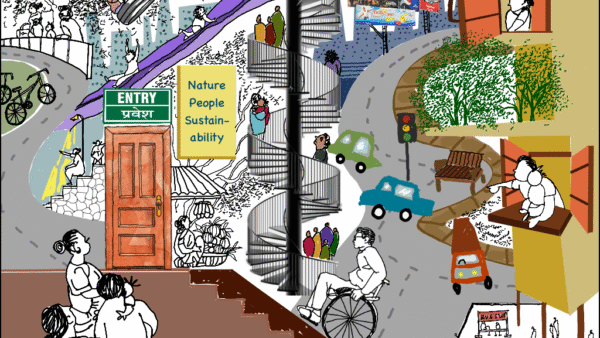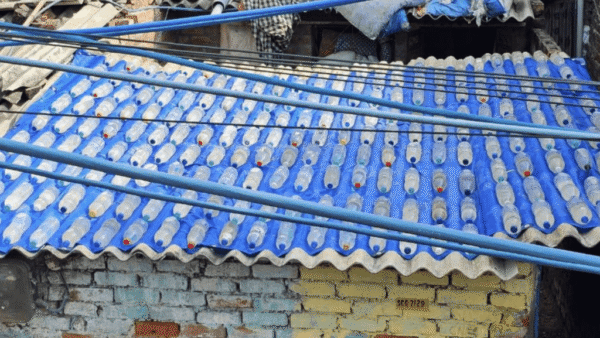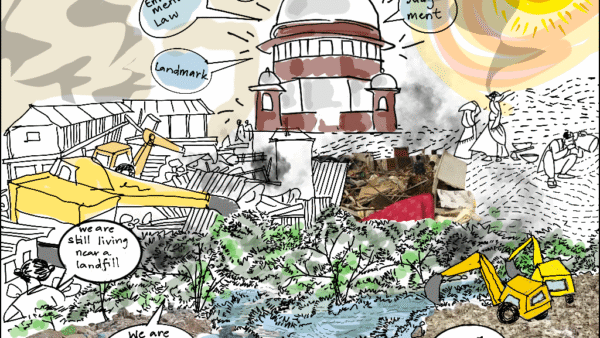Can you begin by explaining the significance of Ennore for Chennai?
Ennore wetlands are the southernmost portion of a sprawling tidal wetlands which stretch from the northern edge of Chennai all the way to Andhra Pradesh, covering the second largest brackish water lagoon in India called the Pulicat lagoon. From groundwater and flood mitigation perspective, from storm surge and sea level rise perspective, the wetlands are important. The Ennore wetlands are responsible for the drainage of two rivers, Kosasthalaiyar and Arani. Between these is the AK basin which contains some of the largest freshwater reserves. The wetlands are also important in maintaining the integrity of the groundwater reserves because they help recharging groundwater which keeps the saltwater intrusion from the sea at bay. Given their large size covering a densely populated region, the Ennore wetlands are important for flood mitigation during heavy rain and from storm surges through the Northeast monsoon. And the wetlands also mean livelihood and identity for several communities which live along the coast of Chennai and northern Tamil Nadu.
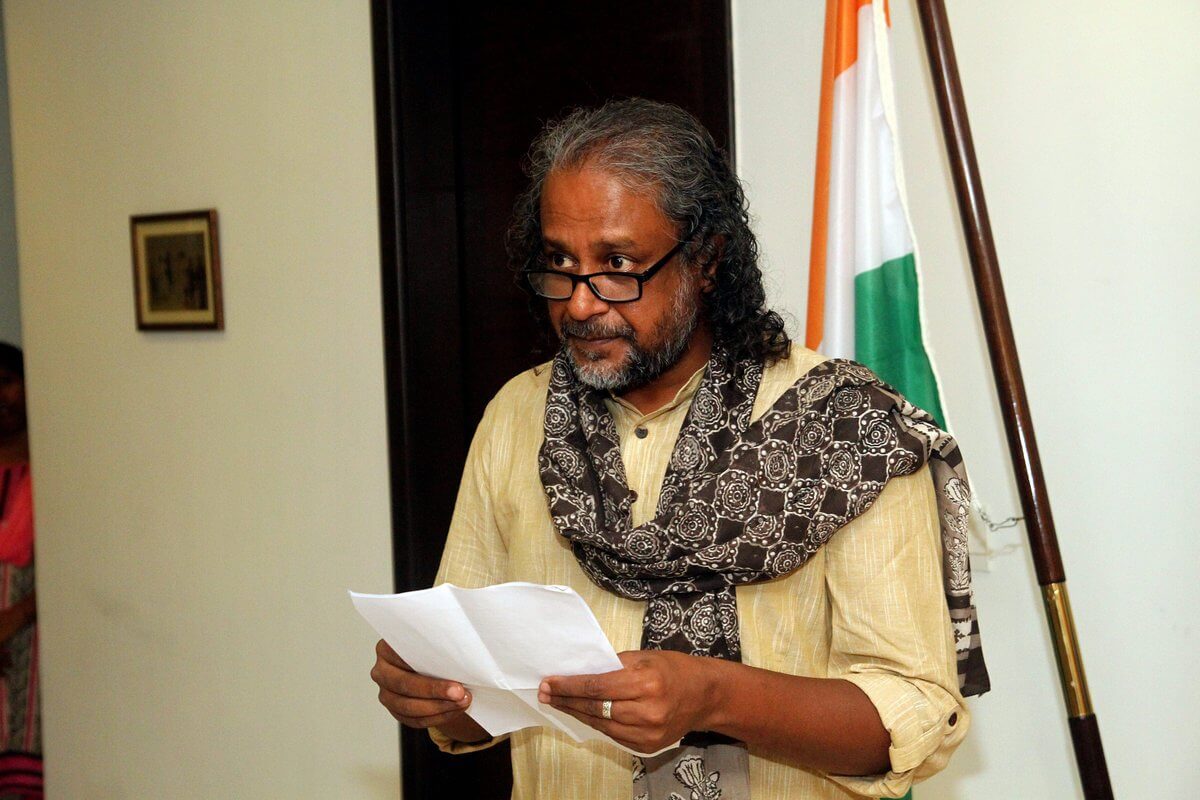
Photo: Twitter
Yet, the wetlands have witnessed many ‘development’ projects. How did that come about?
Parcels of land were given to different developers. This was possible because tidal wetlands have running water only for some time in a year. When the wetlands do not have flowing water or are dry, they look like land where water enters occasionally. These were reclaimed by governments for industrial development. So, there is NTPC’s Vallur power plant which was set up entirely inside this space, a coal yard of the Kamarajar Port, Bharat Petroleum and Hindustan Petroleum’s oil storage terminals, and other installations. I would estimate that close to 2,000 acres of the river’s space has been taken over for industrial real estate. As we speak, there is another about 50 acres – including 17 acres of mangroves – which is being illegally converted by a company called TANTRANSCO, a Tamil Nadu government company which transmits electricity. The transmission towers are entirely inside the river. And about 1,000 acres have been smothered with three to eight feet of coal ash discharged from TANGEDCO which is the public sector power generating company.
How has this impacted the ecology and the community there?
Tidal ecosystems are amazingly resilient. It has been a big fight between the tide and the Tamil Nādu government with the latter intent on finishing off the tidal wetland but the tides bring life back to it. Large portions of the wetlands, especially the areas with coal yards and power plants are lost. The biodiversity and the environmental services that these ecosystems provided are no longer available. The areas with coal ash have seen biological productivity starkly diminish though the productivity can be revived if the ash is removed and the site restored. In other areas, people are still fighting the state. The impact on the fisherfolk has been quite drastic. This industrialisation has led to impoverishment of local communities where locals have seen a reduction in income as well as an increase in expenses due to high health care costs.
What health problems have they been facing?
The fisherfolk, men and women who enter the waters, have a high rate of skin disorders and other ailments that have not even been assessed. Respiratory problems are very common because of the high levels of air pollutants which are confirmed even by studies of the Tamil Nadu Pollution Control Board and Central Pollution Control Board submitted to the National Green Tribunal (NGT). In a recent study that we (a group of individuals and organisations such as Save Ennore Creek Campaign and Healthy Energy Initiative) did of children under-5 years in North Chennai, we found the incidence of respiratory disorders is about 63 per cent. It means 63 children out of 100 in Ennore suffer from respiratory disorders as opposed to Chennai’s average of one in 100.
The NGT order of July 7 came on the case filed by fisherfolk Ravimaran, RL Srinivasan, and K Saravanan? What does this order mean for Ennore?
This is another paper victory. But it is important because the order defines the extent of the Ennore wetlands, and because this is in line with what the fisherfolk have been saying. So that is a big victory. The second aspect is that the NGT order says that the wetlands are to be restored. The third is that the wetlands should be notified as wetlands. That means that activities that do not fall within the definition of wise use of wetlands will be prohibited. These are the significant outcomes of this otherwise extremely ordinary order.
When was this case filed and what did the people have to go through to get here?
A legal case is easy to file but difficult to fight because that requires meticulous evidence building. Ravimaran, a fisherman from a village close to the Ennore river, was committed to the river. So, he had his personal stake as well as the interests of two others, Srinivasan and Saravanan. What the three share is a commitment to environmental justice and to the fishing community…they have been monitoring the situation, highlighting the abuses, focusing on the violations. Their involvement, especially in terms of generating evidence, has been very important as has been the contributions of our pro-bono lawyers.
The NGT order is on paper. How will it translate into action?
I do not really know how that will pan out but we will try to get the order enforced which means that the extent of the wetlands defined in the order should be notified. The remediation must be done as mandated in the NGT order. But the order does not have it that the fisherfolk should be involved, so that is something we will have to get on paper and then in to action. The fisherfolk have to be involved, the local communities have to be involved in monitoring if engineers are doing the right thing or not. These are our immediate goals. Whether we will prevail or not is in the realm of astrology. I cannot tell.
How does the NGT order impact the power plants under construction?
The NGT order does not impact the power plants directly unless they intend to use sections of the wetlands for purposes which do not come under the wise use principles. That would be another fight. Right now, there are three power plants: The ETPS expansion project, North Chennai Thermal Power Station Stage III, and Ennore SEZ power plant which are all in suspension. The transmission towers are also challenged because these are all built inside the wetlands. Unless laws are completely abandoned now, these can’t come to fruition.
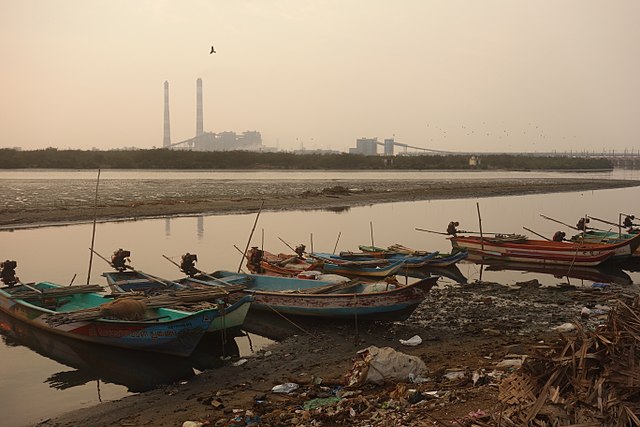
Photo: Creative Commons
The fisherfolk and civil society organisations have been fighting court cases. Can you elaborate on the fight?
Not just the court cases, this month they were in the water too fighting against the transmission towers. It is unwise to rely solely on the court. It is a hostile place for communities and a favourable place for others, a place stacked against ordinary people. People go to courts reluctantly knowing they have no option. If the order is against you, like it was in a number of cases in the Supreme Court right now, you will be arrested. But if the order is in your favour, it will not be implemented. The courts will not do anything to implement it. The streets are a better place to fight; our most effective campaigns have been ones that have mixed public and legal strategies.
The NGT order made Ennore more visible lately but the people have been fighting a long time. How did they – you all – go about it?
The primary protagonists of the Ennore struggle are the fisherfolk who use the river as a source of livelihood and their identity, fisherfolk from the villages of Kattukuppam, Mugadwarakuppam, and Sivanpadaivaathikuppam. These villages rely almost entirely on the river for livelihood. Then, there are smaller hamlets or clusters of Irula tribal villages where women are prominent fishers. These people are the protectors, also users of the river. And it is they who have been arrayed against the Tamil Nadu government and others intent on destroying the wetlands. The fishers’ struggle has been in collaboration with city-based youth, solidarity organisations like my Collective and other movements in the state engaged in social justice issues. Environment is an important social justice issue.
There is a group called Chennai Climate Action Group and the Save Ennore Creek campaign, of which I am part, which has been working with the fishing community on the public part of the campaign to extend technical and legal support to community-led legal cases. Legal education is given to communities so that public action is backed by law. The fisherfolk get educated in law; in turn, they educate the people of Chennai on the importance of the wetlands. There have been and will be significant legal victories, but these matter only if they can be enforced to the ground, and that requires communities, including folks from the privileged sections of society, who are willing to push for enforcement.
Tell us more about the struggle to save the wetlands.
The struggle to save the wetlands was mounted by the fisherfolk since the mid-1990s though it became more prominent and visible after the intervention of solidarity groups from Chennai. The Save Ennore Creek campaign is a solidarity group which works with the fisherfolk to highlight the issues that they’ve been talking about. Of course, the Chennai floods in 2015 played a very important role in highlighting the importance of wetlands. After that the fishing community has used several tactics in collaboration with the solidarity groups. For example, the groups brought in celebrities and politicians to witness the destruction – actor Kamal Haasan has come, MP Kanimozhi did too.
Then, there’s also an important discussion song called Chennai Poromboke Pāṭal that the Save Ennore Creek campaign made. Poromboke denotes the commons; the wetlands are the commons. The commons are seen as valueless, useless, worthless spaces – and therefore a power plant or a coal yard or a port comes up. For the fisherfolk, these commons are valuable. They are saying that this land, the commons, should remain unbuilt and unowned which means that it must remain in common trusteeship. It makes a lot of sense for a world faced with an existential ecological crisis. So, we made the song Chennai Poromboke Pāṭal to celebrate the commons, to revalorise the commons. Such work made the Ennore issue visible.
You said the fisherfolk also educated the people of Chennai about the wetlands. How did they do that?
In a number of ways… I too have been educated about the wetlands by the fisherfolk. The collective, Vettiver Collective, that I am part of has many people who have all spent several years listening to fishing communities; all that we have learnt about wetlands were from our fisher teachers. When we learned, we opened opportunities for the fisherfolk to educate others through tours. We do ‘Toxic Tours’ where we take people across north Chennai. Normally when you visit Mumbai, you will probably go sightseeing to all the important places; we take people to spots in Ennore, places that are dirty, the sacrifice zones of the city. That’s called a ‘Toxic Tour’ that speaks to the tourists about the importance of the river and the wetlands, what has happened to it all, and what its implications are. During the ‘Toxic Tours’ the fisherfolk took people around and said ‘look at this, this is water that you’re sailing on, right? But look at this map, it shows this as a petrochemical industrial estate.’ It was conveyed to people that the state was lying. Then there was public action in January 2018, a ‘Neer Satyagraham’ or Jal Satyagraha where people stood in the river to send out the message ‘this is water, not land’ which was followed by public protests.
What has the community struggle been able to achieve so far?
We have prevented many bad things from happening. We have also had significant victories where fishers and Save Ennore Creek Campaign have prevented new encroachments by the port and the power plants. But not many good things have happened. The river is as messed up as before though there are several different court orders. Who cares about court orders, right? If the courts say, ‘evict a slum’ that order will be acted upon but a court direction to the government on Ennore will not be. It means we have to keep fighting. Still, what we have achieved is that the river or large sections of the river which had disappeared from official records and maps for about 20 years, from 1997 to 2017, have been brought back on the map, on paper. The state had lied about it in the Coastal Zone Management Plan stating that large sections of the river – where people fish – do not exist and turned it into land for TIDCO petrochemical industrial estate. If you look at the maps in the public domain, or the CZMP, they show the fishing area as land and there’s no river. So, the struggle brought back the river – on paper.
The fisherfolk of Ennore have won a lot of paper battles. Sometimes, it seems like what’s on paper is more important than what’s on the ground; if you’re living on a piece of land that you think you own, you still have to prove on paper that you’re occupying it. If what you are sailing on is water, you must have a piece of paper that says this is water. That is the importance of paper. Most of our struggles, and achievements, are about getting it right on paper. Now we will have to translate them on the ground to ensure that the wetlands are protected to reflect what’s on paper. That will be another big fight.
Nityanand Jayaraman is a Chennai-based writer and activist, and co-founder of Vettiver Koottamaippu, an anti-corporate social action collective.
Cover Photo: Creative Commons


